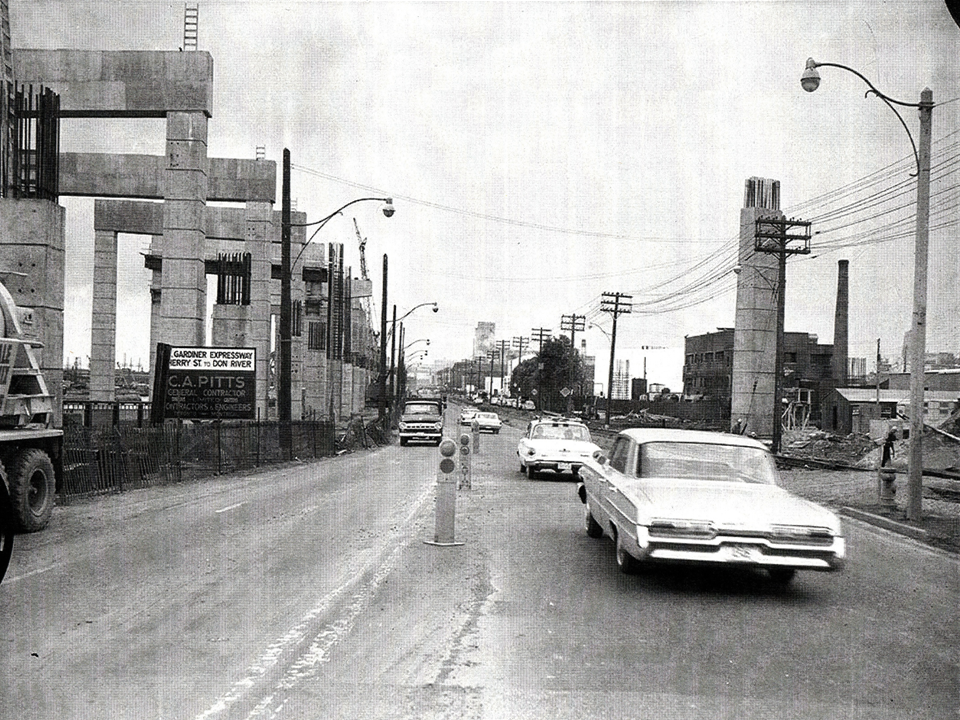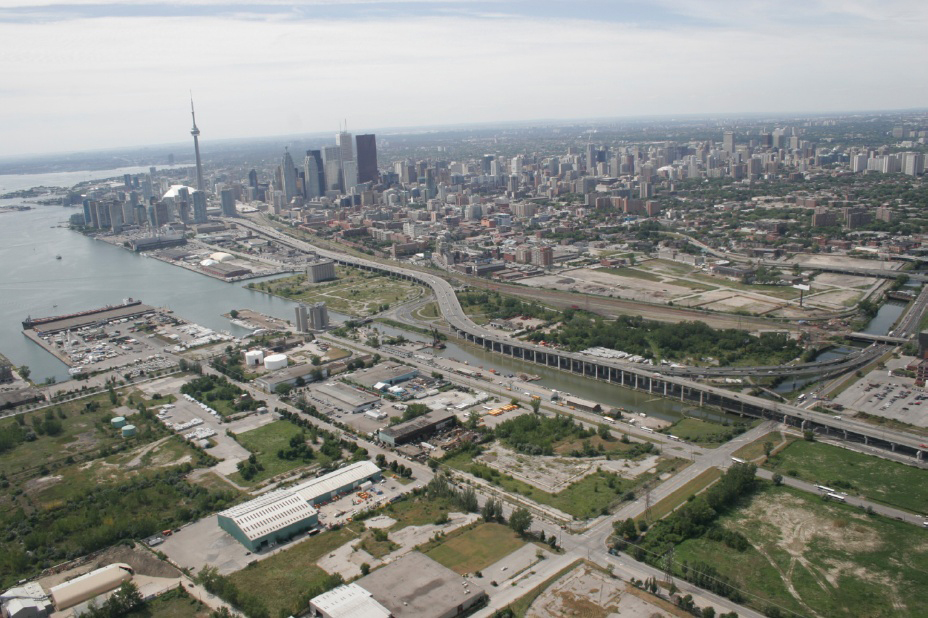- Who We Are
- What We Do
- Our Issues
- Our Projects
- Sprawl Retrofit
- Highways to Boulevards
- CNU/ITE Manual
- Health Districts
- The Project for Code Reform
- Lean Urbanism
- LEED for Neighborhood Development
- Missing Middle Housing
- Small-Scale Developers & Builders
- Emergency Response
- HUD HOPE VI
- Rainwater in Context
- Street Networks
- HUD Finance Reform
- Affordable Neighborhoods
- Autonomous Vehicles
- Legacy Projects
- Build Great Places
- Education & Trainings
- Charter Awards
- Annual Congress
- Athena Medals
- Resources
- Get Involved
- Donate
- Membership
- Public Square
History
Built between 1955 and 1966 by the Ministry of Transportation of Toronto (MTO), Toronto's Frederick G. Gardiner Expressway is a major east-west thoroughfare that connects downtown Toronto to its western suburbs. At the time it was built, most of the area was industrial and not a civic waterfront destination. However, its path still cut through large amounts of beloved park land, including the complete removal of the frequented Sunnyside Amusement Park.
The Gardiner Expressway also required the re-routing of the existing tree-lined Lake Shore Boulevard and putting it in the shadow of the new elevated eight lane expressway, separating the city from its Lake Ontario waterfront. What was originally built to accommodate much less daily traffic, the Gardiner, east of Jarvis Street, now carries 120,000 vehicles daily and costs around $10 million annually in repairs.

Proposal
For years, citizens of Toronto have called for the removal of the elevated expressway as it runs from downtown eastward. And they've had some success: a far eastern portion of the freeway was successfully removed in 1999. It was originally intended to connect downtown to the suburb of Scarborough, but a citizens' revolt stopped the freeway's progress and left only a 1.3 km stub. The result was a beautiful linear park that includes bikeways and public art installations. However, much of the eastern portion remains.
Current Plans
The City of Toronto and WATERFRONToronto finished work on the Gardiner Expressway & Lake Shore Boulevard Reconfiguration Environmental Assessment & Urban Design Study, which helped determine the future of the 2.4 km elevated section of the expressway from Jarvis Street to just east of the Dan Valley Parkway abutting Lake Ontario. Four main approaches are being considered for the Gardiner: maintaining ($235m), removing ($240m-$360m), improving ($420m-$630m), or replacing ($610m-$910m). In contrast, the Toronto City Council already approved a budget – between 2013 and 2022 – for a nearly $500 million rehabilitation of the downtown expressway. Interestingly, the maintenance work will move west to east down the freeway – perhaps in anticipation of the removal campaign's success.
Former Toronto Mayor David Miller believes tearing down the Gardiner to be "the most practical approach and offers the greatest public benefits." In June of 2015, the City Council voted 24–21 in favour of the "hybrid" option, 26–19 against the "remove" option, and 44–1 against the "maintain" option. Reconstruction of the Jarvis to DVP section and the removal of the section east of the DVP was not expected to start before 2019. In January of 2016, city and Waterfront Toronto staff released three hybrid configurations-- but ultimately ended up endorsing the so-called Hybrid 3 option, which removes the Logan Ave. on- and off-ramps and adds two ramps in the Keating precinct.
The Gardiner Expressway Strategic Rehabilitation Plan will realign the expressway and help transform the area to improve transportation corridors and provide more efficient public transit and new public facilities. Construction is planned through 2030. In 2021, the City of Toronto tore down the Gardiner Expressway ramps to Logan Avenue as part of the planned Lake Shore Boulevard East project to include safer intersections and facilities for pedestrians and cyclists.

Get Involved
Be sure to check out Gardiner East Reconfiguration Environmental Assessment & Urban Design Study website and the Waterfront website for ways to help turn this expressway into a boulevard.
Keep up with their Existing Condition page.
Top image source: Vik Pahwa


















